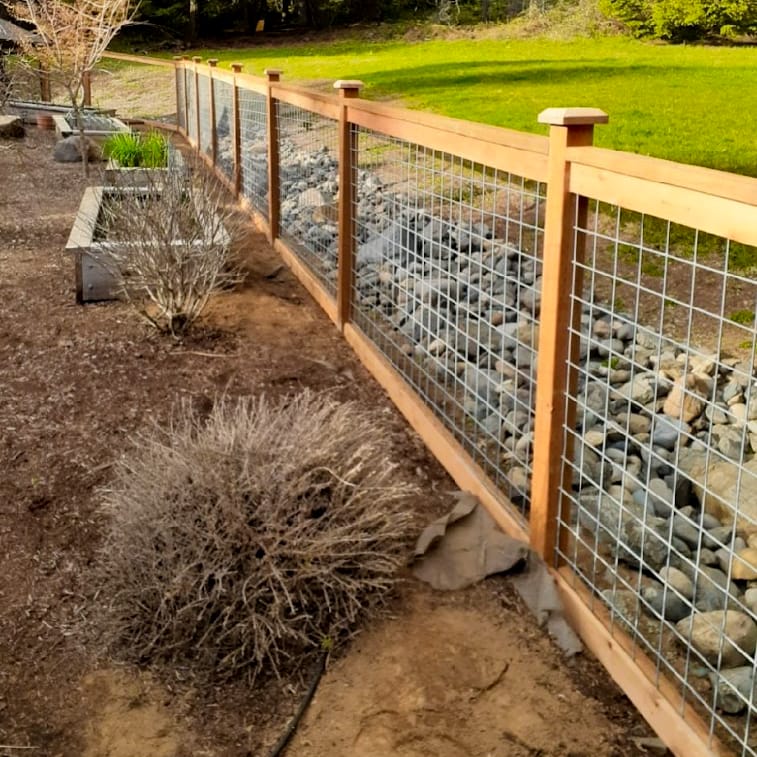Featured

Setting up a fence on unequal or sloped terrain provides an one-of-a-kind obstacle, however with the best knowledge and planning, it's entirely possible to accomplish a functional and visually pleasing result. Whether you are attempting to confine your lawn, include privacy, or just mark boundaries, recognizing how to browse these kinds of landscapes is important for an effective fencing installation.
- Recognizing the Sort Of Slope. The initial step in establishing exactly how to mount a fencing on uneven or sloped land is to examine the extent of the slope. There are 2 primary sorts of slopes you may come across:
Gradual Slopes: These are mild inclines where the terrain doesn't alter drastically in altitude. With this sort of slope, a typical fencing setup may be sufficient, specifically if you choose for the stepped technique. Steep Slopes: An extra difficult surface where the ground climbs greatly over a brief range. This calls for more cautious planning and specialized strategies such as racked fence or tailored steps to comply with the terrain's natural gradient. By recognizing the slope type, you can establish which fencing installment approach will work best.
- Stepped vs. Racked Fence. When managing an incline, there are 2 primary methods to approach the setup: the tipped method and the racked technique.
Tipped Fencing: The stepped approach is excellent for moderate slopes. In this situation, the fence follows the all-natural shape of the ground, but the panels are set up in "steps." This means the fencing sections are organized in a horizontal pattern, with each section stepping down or up according to the slope. The advantage of this method is that it can be much easier to install, however it may leave gaps at the bottom of the fence.
Racked Secure fencing: This approach is best for steeper inclines, as the panels are readjusted to follow the incline's angle. This means that the whole fence will adhere to the contour of the ground without leaving any type of voids at the base. While this method requires more accurate job, it creates a seamless and visually smooth fencing.
- Considerations for Post Installation. Installing posts on irregular terrain needs careful dimension and focus to information. If utilizing the tipped technique, articles need to be placed at varying heights to match the incline. This suggests that each message requires to be appropriately gauged and set up to make sure the fencing remains tough and straight.
For racked secure fencing, posts are generally mounted at a constant elevation, and the panels are gotten used to fit the angle of the slope. Regardless, it's crucial that the blog posts are deeply set in the ground to stay clear of instability, particularly when handling sloped or unequal soil conditions.
- Picking the Right Products. Not all fencing materials are developed equivalent when it involves sloped land. Some products may call for more personalization to fit the slope, while others are more adaptable.

Wood Fence: Timber is functional and can be customized to collaborate with both stepped and racked installations. It can be developed with precision to follow the incline, yet it might take longer to set up, specifically on high surface.
Vinyl Fence: Plastic is flexible and can be adapted to sloped surface with convenience, specifically with the racked approach. It's durable and calls for less maintenance than timber.
Chain Link Fence: Wire mesh fence are typically among the most convenient to install on sloped surface as a result of their integral flexibility. The materials can flex to adhere to the all-natural incline, making it suitable for uneven ground.

Each material has its very own collection of benefits, so take into consideration the overall look and performance you're intending for when selecting the ideal option for your home.
- Professional Installation. While some property owners might try to set up a fencing on sloped terrain themselves, working with a professional fencing installer is usually a smart selection. Professionals have the experience and devices essential to manage complicated installments on uneven ground. They will make sure that the messages are properly positioned, the panels are safely affixed, and the final item is both stable and visually attractive.
Conclusion. Setting up a fence on sloped or irregular surface is definitely possible, however it needs thoughtful consideration and careful execution. By evaluating the incline type, selecting the right setup method, selecting suitable materials, and perhaps getting specialist aid, you can efficiently construct a fence that enhances your residential or commercial property. Whether you select a stepped or racked design, the outcome will certainly be a secure, functional, and attractive enhancement to your landscape.
Latest Posts
Boost Your Residential Property with Overhead Door Systems
Published May 28, 25
1 min read
Discover Limited-Time Auto Repair Specials in Chicago at Montclare Auto Repair
Published May 26, 25
1 min read
Experience Your Financial Partner at WyHy – Top Benefits for Your Future
Published May 26, 25
1 min read
More
Latest Posts
Boost Your Residential Property with Overhead Door Systems
Published May 28, 25
1 min read
Discover Limited-Time Auto Repair Specials in Chicago at Montclare Auto Repair
Published May 26, 25
1 min read
Experience Your Financial Partner at WyHy – Top Benefits for Your Future
Published May 26, 25
1 min read